In today’s fiercely competitive business landscape, professional service firms strive to differentiate themselves and stay ahead of the curve. While exceptional services and strong client relationships are vital, profitability and margin should not be overlooked. These financial metrics are the foundation upon which professional service firms build their success, allowing them to allocate resources efficiently, invest in areas that yield the highest returns, and divest from those that don’t. Profitable firms have the financial flexibility to invest in technology, research, and innovation, which enables them to stay competitive. They can attract and retain top talent by offering competitive compensation packages and, in today’s challenging talent market, securing top talent enhances the firm’s capabilities and reputation. A profitable firm will also be able to react more effectively to unexpected setbacks, such as economic downturns or other business challenges. Essentially, it provides a safety net for the firm’s continued operation.
While profitability is the goal, margin is a critical metric that reflects a firm’s efficiency and effectiveness in managing its resources. Margin is generally defined in terms of a percentage, which is computed as net income divided by the fees generated. To simplify, margin generally refers to the amount of gross revenue that remains after paying all expenses. To illustrate, a firm that generates gross revenues of $10 million and net income of $1.5 million has a margin of 15% ($1.5 million divided by $10 million). The higher the margin, the more profitable the business is. Monitoring and optimizing margins require a keen focus on cost control. Firms that maintain healthy margins are more adept at managing overhead, which, in turn, allows them to offer competitive pricing to clients.
Margin analysis helps firms set competitive yet profitable pricing strategies. Understanding the cost structure allows for informed decisions on pricing models and service bundles. Margin also serves as a key performance indicator (KPI). It helps firms assess the efficiency of their operations, providing insights into areas that need improvement. Maintaining a healthy margin is essential for the long-term sustainability of a professional service firm. Without adequate margins, firms may struggle to cover their costs and invest in growth.
Achieving and maintaining profitability and margin in professional service firms requires deliberate strategies. Here are some effective approaches:
- Client Acceptance – Focus on clients who align with the firm’s expertise and are willing to pay for value-added services. Avoid clients that consistently demand discounts and erode margins.
- Operational Efficiency – Streamline internal processes to reduce overhead costs. Implement project management tools and workflow automation to enhance productivity.
- Pricing Models – Regularly review and adjust pricing models to reflect the firm’s evolving capabilities and market conditions. Consider value-based pricing to capture the true worth of your services.
- Staff Development – Invest in continuous staff development to improve efficiency and service quality. A skilled workforce can complete projects more quickly and with fewer errors.
- Technology Integration – Embrace technology to improve efficiency, reduce manual tasks, and enhance client service. Customer relationship management (CRM) and project management software can be invaluable.
Profitability and margin are not mere financial metrics; they are fundamental to the success and sustainability of professional service firms. Focusing on profitability enables resource allocation, innovation, and risk mitigation, while margin reflects efficiency and competitiveness. By diligently managing these aspects, professional service firms can thrive in a competitive landscape, deliver exceptional value to clients, and secure long-term success.
Listen to The Balance Sheet Breakdown
A Guide to Professional Service Firm Profitability: Understanding Utilization
Part 3 of 4
A Guide to Professional Service Firm Profitability: Understanding Utilization
Part 3 of 4



